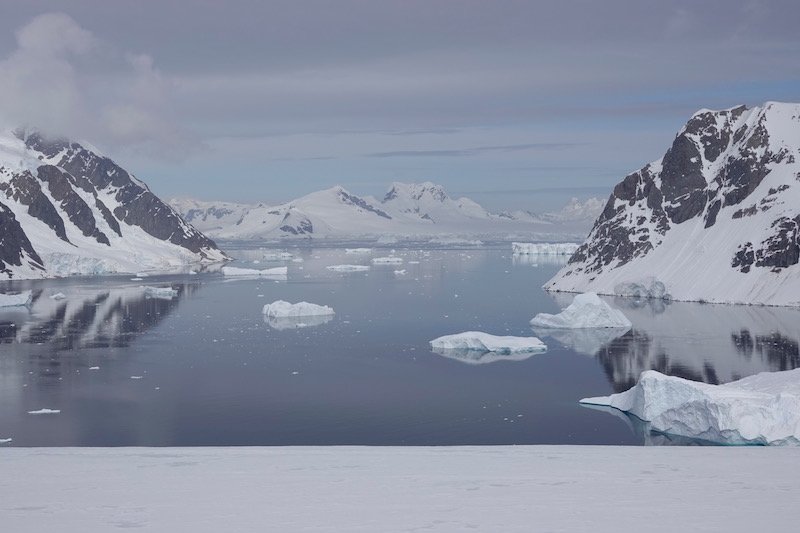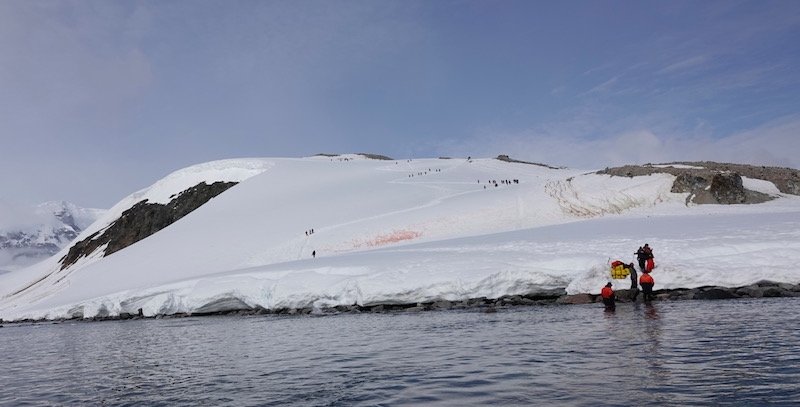
News (123)
We know that Antarctica is the frozen planet and we tend to think that its animals and plants must also be well adapted to cold conditions. As a result we probably assume that they do better in cold conditions than other plants or animals. But is that really true?
Working with mosses, the main plants, in Antarctica I have often wondered this? I know they are amazing at surviving the cold. Try putting your salad vegetables in the freezer and you quickly see that many plants are very bad at tolerating freezing. Some plants are even damaged by chilling temperatures above zero (fridge temperatures). But we can collect Antarctic mosses, dry them and put them in the freezer and then take them out after a few months, or more than 50 years, and they will grow again! So yes, they can tolerate freezing conditions - they put up with about 8 months a year in nearly complete darkness and temperatures as low as -40˚C
But that doesn’t mean they like it cold. Are they just able to tolerate cold but would be more productive if summers were warmer? If so, can they warm themselves up above those usually chilly summer air temperatures of 1-2 40˚C? Are they really in Antarctica because they can survive the cold winters while other plants can’t? In which case its more about lack of competition from flowering plants than actually being truly cold loving.
Climate change is affecting Antarctica and minimally destructive long-term monitoring of its unique ecosystems is vital to detect biodiversity trends, and to understand how change is affecting these communities. Back in the 1990s when I first visited Antarctic the tradies at Casey would ask “So what is happening to the moss?” given that they knew we were studying it. At the time we didn’t know, because long term monitoring was not something that anyone was interested in funding. But it bugged Dr Jane Wasley & I that we didn’t know the answer. So, when State of the Environment Reporting started, we agreed to try and come up with a monitoring system that would answer the question.
Reframing conservation physiology to be more inclusive, integrative, relevant and forward-looking
Written by Sharon RobinsonThe Editors of Conservation Physiology, myself included, have just published a perspective paper which reviews how physiological tools have been applied within conservation frameworks and the contribution they can play in future. While the number of success stories is growing, the paper highlights some of the ways in which conservation physiology has the potential to contribute to major advances in protecting and restoring biodiversity. In particular, we considered how the physiology toolbox can be used to address the most pressing conservation issues (e.g. through addressing the Sustainable Development Goals and delivering science to support the United Nations Decade on Ecosystem Restoration).
Anatomy of a heatwave: how Antarctica recorded a 20.75°C day last month
Written by Sharon RobinsonIn late February there were reports of record-breaking high temperatures from scientists working on the Antarctic Peninsula. At the time Diana King and I were in NSW in Australia having spent the summer experiencing smoke pollution from the Australian bushfires along with extremely hot days. Our colleague Dana Bergstrom was sending us reports of rain at Davis Station in East Antarctica. Given that almost all precipitation falls as snow in Antarctica, these were strange reports. Our Chilean colleagues, Marisol Pizarro Rojas and Gustavo Zúñiga were also reporting that there was no snow around the Escudero research station on King George Island and that every day was perfect for field work, a most a worrying development. There is always bad weather sometime in Antarctica!
An article on how we cope with the fear and horror that now goes hand-in-hand with climate change? by Keeli Cambourne in The Stand.
Plus a link to an article on a similar topic about Laureate Fellow Professor Belinda Medlyn ‘I can see where we are headed & it’s bad’: in the Women's agenda
There is no strong, resilient Australia without deep cuts to greenhouse gas emissions
Written by Sharon RobinsonAn open letter on the scientific basis for the links between climate change and bushfires in Australia.
This open letter is supported by more than 400 scientists with research expertise across the fields of climate, fire and weather science. This open letter is composed of the full statement, a summary statement, and lists of co-signatories and references.
Please read and share.
How civil disobedience is changing the conversation around the climate change emergency
Written by Sharon RobinsonGeorgia Watson and Sharon Robinson,
Global Challenges Program, University of Wollongong, Wollongong, NSW, Australia
The Wold Meteorological Organisation (WMO) have just reported that 2019 capped off an exceptionally hot decade, with global temperatures 1.1˚C above pre-industrial levels last year. The Bureau of Meteorology’s annual climate statement for 2019, shows that last year was Australia's warmest year on record, with the lowest annual rainfall on record, and will rank amongst the most severe drought years ever recorded. The consequences of this hotter, drier climate are evident. The 2019-2020 bushfire season has seen the greatest area of Australia burnt with at least 10.7 million hectares (as of 8 Jan 2020, across all states and territories excluding NT). Australia has already warmed 1.52˚C above average, surpassing the Paris Agreement goal of limiting global temperature rise to 1.5˚C above pre-industrial levels, and we are already seeing the devastating effects of our new climate on humans and wildlife.

On International Women’s Day it’s important to remember the women who came before and celebrate how they have paved the way for us. On a personal level I am intensely grateful to my mother and both my grandmothers who all believed in me, encouraged my curiosity and always made me feel I could do anything I wanted, even if their life options were not always as straightforward. On our recent Homeward Bound voyage Christiana Figueres introduced us to both global optimismand the term stubbornly optimistic. I think I get my stubbornness from a strong line of women on both sides of the family!
We finally get ashore again on Jan 12th. Danko Island is near Cuverville Island where we landed a few days ago and saw Gentoos. It has a steep hill and a few small penguin rookeries. It’s great to walk up the hill where there is a large plateau and stunning views towards the peninsula. Inspired by Christiana Figueres many of us also have a magical silent time, listening to the whales breaching below and the avalanches and the calving glaciers cracking across the water.
On the way up the hill there is a big patch of red snow algae. Snow algae are singled celled algae similar to the ones that cause algal blooms in water. These ones swim in the water that coats the ice crystals within the snow banks. Like algal blooms in lakes and oceans the cells divide when conditions are good and swim off to new territory. They need enough sunlight for photosynthesis and to warm the snow, they also need nutrients which are in ample supply from penguin poo in the vicinity of penguin rookeries.
Snow algae are green algae like Chlamydomonas nivalis but can appear green or red depending on the amount of red carotenoids they produce to protect themselves from too much light (including ultraviolet UV-B). Drs Matt Daveyand Peter Fretwell are using satellites to track these snow algae blooms across Antarctica so if you spot any, take a photo, log the coordinates and send them a message!
It’s a great location for photographs and Rachel Bice is also from Cornwall, where I lived from age 6 to 19 and so we team up for a Kernow flag moment!
The Cornish flag is the flag of Saint Piran, the patron saint of tin-miners. I grew up in tin mining country and the moors where the mining had formerly occurred were great places to search for rose quartz, amethysts and other interesting rocks. Tin was the most important element in the economy of Cornwall but when the mines closed the Cornish took their mining skills all around the world.
















